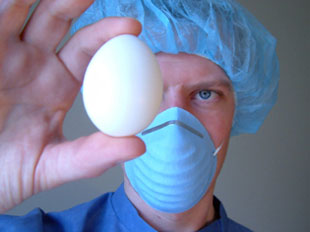Grade A
Ever wonder how the Department of Agriculture validates our food? Food is subject to federal inspection for wholesomeness and must receive a stamp for passing safety and integrity standards if it’s to be sold on supermarket shelves. Great efforts are made to minimize bacterial contamination, but food–borne microbes can still proliferate, which is why safe food handling recommendations are required on all packages. Quality grading isn’t mandatory but many producers choose to include grades on their labels. So what exactly do those USDA shields mean?
- Meat: Beef, lamb, and veal receive 1 of 3 main marks — USDA Prime, USDA Choice, and USDA Good. Most popular is Choice, marking high quality. Prime signifies the highest quality… and most expensive. Good won’t exhibit the same tenderness and juiciness as its higher–grade counterparts, but it’s usually lower in fat.
- Eggs: While their size has nothing to do with their grade, the condition of their shell and interior consistency do. Grade AA is highest quality, suggesting firm yolks and thick whites. Grade A stands a close second. While Grade B eggs rarely appear in stores, they aren’t harmful if used for baking.
- Dairy: The highest–quality butter — considered the sweetest — receives Grade AA, but Grade A is still top notch. The Quality Approved shield on cottage cheese and sour cream simply confirms that the cheese was manufactured in a clean plant under USDA supervision.

